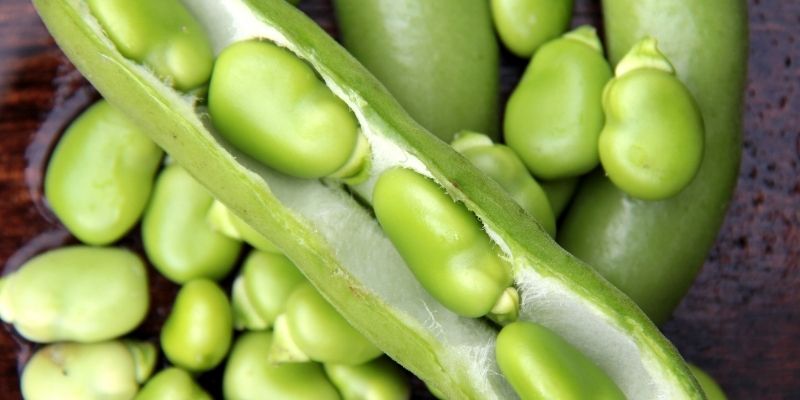A brief history of Vicia Faba and its use in Parkinson’s disease PD

Fava beans contain L-Dopa
Vicia Faba plants, also broad beans, have a rich content in oligo-elements, such as vitamin C and B, potassium, iron and magnesium. They are also rich in polyphenols that have strong antioxidant properties and protect us against free radicals. Oxidation is considered by the scientific community as one of the most essential factors of ageing and cell degeneration (Pastor-Cavada et al., 2011. J of Food Biochemistry). They have, therefore, been used for their therapeutic values and consumed in our diets for millennia (Prabhu and Rajeswari, 2018. IFRJ ; Salehi et al, 2020. Phytother Res). Moreover, fava beans contain L-Dopa, the precursor of dopamine, which is lacking in patients suffering from Parkinson’s disease.
Doctors recommend eating fava beans
In 1913, young Swiss chemist Markus Guggenheim was the first to isolate L-dopa from Vicia faba plants. He also conducted a self-experiment where he ingested 2.5 g of L-dopa. His isolation from Vicia faba plants and his first study marked the beginning of its use for Parkinson’s disease (Guggenheim, 1913. Hoppe-Seyler’s Zeitschr Physiol Chem). Since then, many neurology studies have tested the use of natural L-Dopa for the treatment of Parkinson’s disease, and more and more doctors recommend eating fava beans to help control the symptoms of Parkinson’s disease.
Cooking fava beans is not the ideal method
Even if the entire fava plant contains L-Dopa, some structural parts have a much higher L-dopa content than the beans (Romero et al, 2017. CNS Neurosci Ther). Powder extracts of these structural parts are more convenient for Parkinson’s disease sufferers, as with the beans they would need to eat large quantities of them every day to have an equivalent of the dosage of L-dopa. Moreover, heat can cause the loss of the active principles of fava beans and cooking fava beans is not the ideal method for taking advantage of all the plant’s valuable nutrients.
The extraction process of the active principles including the L-dopa is crucial to preserve these valuable ingredients.
In conclusion, Vicia Faba plant is rich in natural L-Dopa, and its valuable nutrients can be incorporated into daily diets to achieve a better quality of life in Parkinson’s disease.
Important information and disclaimer: This article is for general information only.
It is not used to treat and cure diseases. If you have any health problems or illnesses, please contact your doctor or pharmacist.
Share and join us
This content can be important for people looking for information and solutions. Please share it!
If you liked this article and would like to receive more information about Vicia-Faba, please subscribe to our newsletter! Thank you!